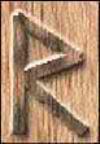
Relationship among living beings
All living beings, from man, who is at the top of the pyramid, to the lowest worm, use benefits and take advantage of the weapons of offense and defense. All are suitable for shape and structure of their environment and their way of life.
From the polar regions to the torrid ones, from forests to aquatic lands, and coastal marshland, in every environment animals and plants help, oppose and cross each other that may appear to be confused but instead it is harmonious and chosen.
The struggle to find the food, to defend against opponents of the same species or different species, to win heat, cold, humidity, drought, mists, the fight to live and survive in the environment necessarily leads to know the methods and weapons used for not to succumb and disappear.
The methods of struggle – It is unlikely that living beings live completely isolated because not only the desire for life in common is widespread but also because it is known that unity is strength.
Flocks and herds - The forest is more resistant to battle the wind than an isolated plant; the herds of cattle, herds of horses, flocks of birds, schools of fish can struggle for existence with better chance.
Societies – Insect societies assume the highest forms of associations.
The individual components not only help each other but divide the work specializing each in a specific task; it is in the case of bees, ants, termites.
Colonies - Sometimes groups of individuals of the same species, united with continuity of tissues and circulating liquids, form their own groupings, building real territories, such as coral islands.
Symbiosis – The fact that individuals of the same species can be united together to help each other is a natural thing, but that individuals of different species or even of animals and plants come together so closely that they cannot live without the other may seem unusual.
The unusual fact is more apparent than real if you think that a blind and a deaf may help each other very well, the same is with a plant, inept to live, as the alga without water and minerals that are essential for life, unites the fungus, full of stickers but devoid of chlorophyll, in order to live together.
Their intimate union gives birth to a new organism: lichen.
When the common life brings benefit to both (in the case of lichen) it is symbiosis, and when one is benefited and other is harmed, the union is called parasitism.
Symbiosis among plants and animals - Some plants (lime tree and certain types of oak trees) offer hospitality and nourishment on their leaves to certain mites to exploit. They suck the juice from which they come.
Symbiosis among animals – It is curious the union of the hermit crab (a shrimp from the soft and helpless abdomen) with the sea anemone.
The hermit crab protects its abdomen sticking it to the empty shell of a mollusk and defends by attaching to the sea anemone. As the crab moves about in search of food the anemone is brought into contact with a greater supply of food and the crab is protected by the anemone’s stinging sells.
Parasitism - More frequent and also more complex is the parasitism which is an adaptation acquired from living species.
This phenomenon is widespread and various. There are many complicated ways in which it occurs.
When a parasite chose its victim from which to draw food not only abandons it but ends up, even to the law of non-use to transform its organs keeping only well developed: those of fixation, absorption and reproduction.
It appears that the parasites are invaded by an overwhelming need to procreate children as if a dark omen warns them that the means of defense and the reactions of the body to which they are attached may one day destroy their species.
Who can enumerate the amount of parasites that exist in nature?
In general they are grouped into the small species that constitute the world of microorganisms.
There are external and internal parasites.
External parasites live outside the host body as louse, mite, etc. And internal parasites live inside the body of the host.
Among parasites there are various species in both the plant and animal worlds.
It is important to know their life cycle in order to preserve the hosts from their attacks.
Human parasites – There are many human parasites. The most frightening among them is protozoa.
It is the parasite that causes malaria that is established in red blood cells and it is reproduced by multiple division.
The tertian (every 48 hours) and quartan fevers (every 72 hours) are due to the exclusion of plasmodia that continues to infect other red blood cells.
Plant parasites – Cuscuta (dodder) is a typical example of a plant parasite.
Its body reduced to a highly branched filament clings around the branches and leaves of the victims. The dodder produces haustoria that insert themselves into the vascular system of the host sucking its sap.
The study of parasites has great importance because it allows us to preserve plants and animals from terrible consequences.
It is important to note that dirt, filth and neglect of a person are the best allies of the parasites.
READ ALSO:
The peacock - In Indian mythology, to draw its wings, reminiscent of many eyes, represents the image of a starry sky.
The spider - In ancient Indian tradition Brahma, the creator of all things, was allegorically called the spider that was spinning the web of the world.
The dove - In China, a dove is a symbol of longevity and filial piety. In the East, the dove is a symbol of love and marriage.
The tiger - The tiger is a symbol of power, strength and success, but at the same time it is a symbol of destruction, because the energy can be both creative and destructive.
The lion - In the symbolism of the elements associated with the fire, the lion represents courage, supreme power, nobility and pride.
The jaguar - Aztecs and Maya believed that four jaguars represent the guardians of the road to peace.
The elephant - represents many qualities including: strength, royal power, dignity, patience, wisdom, longevity and happiness, as well as being a symbol of good luck.
The butterfly - is a symbol of a soul, the fragility, the shortness of life, happiness and non-permanence.
The owl - It is a symbol of wisdom, knowledge, sensitivity, a prophetic gift, moderation, and melancholy.
The toad - In Vietnam, the toad is associated with rain, fertility, wealth, and sexuality. In Egypt, frogs were considered sacred animals.
The bear - The bear is a symbol of good will, heroic strength and clumsiness but also of malice, brutality and greed.













